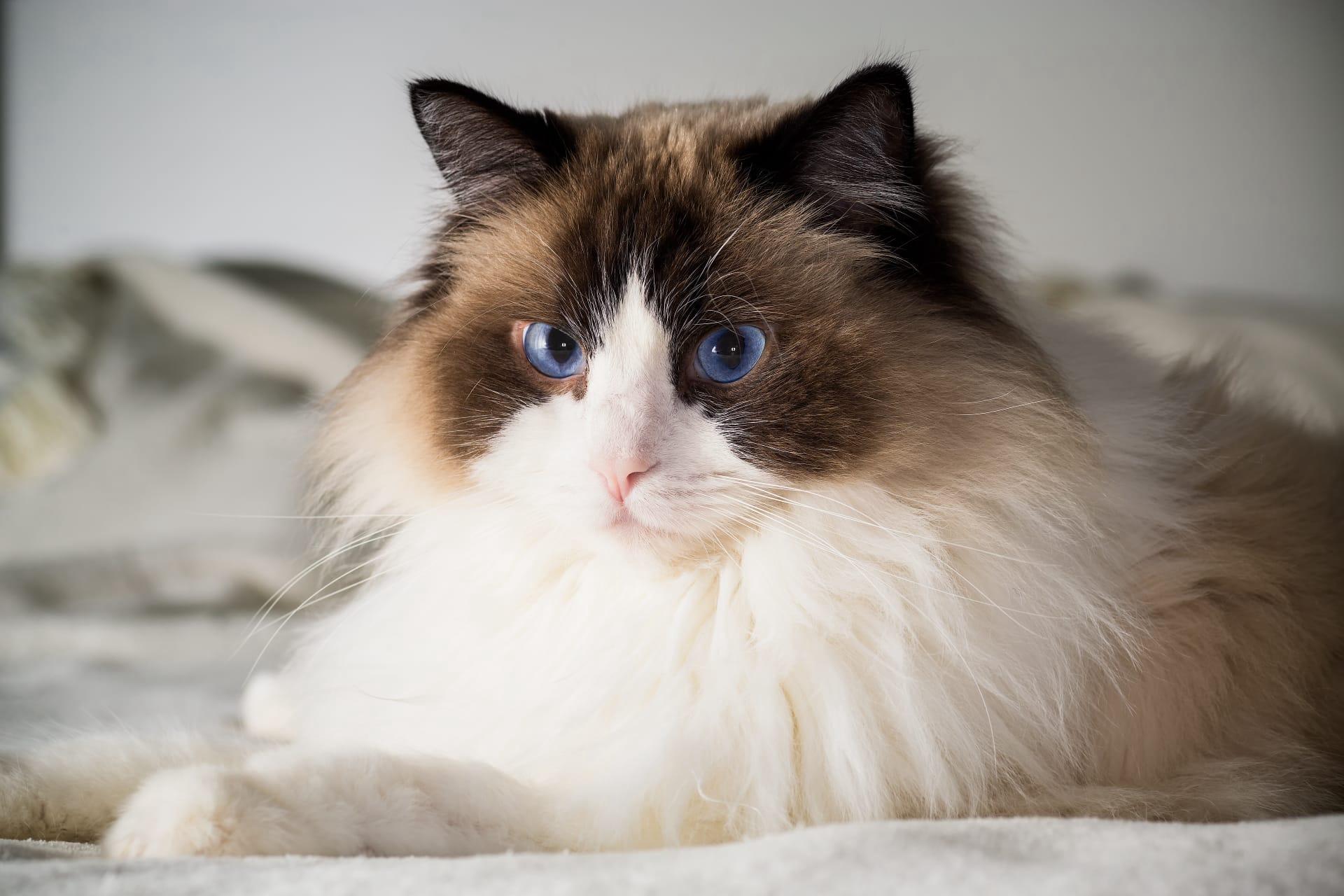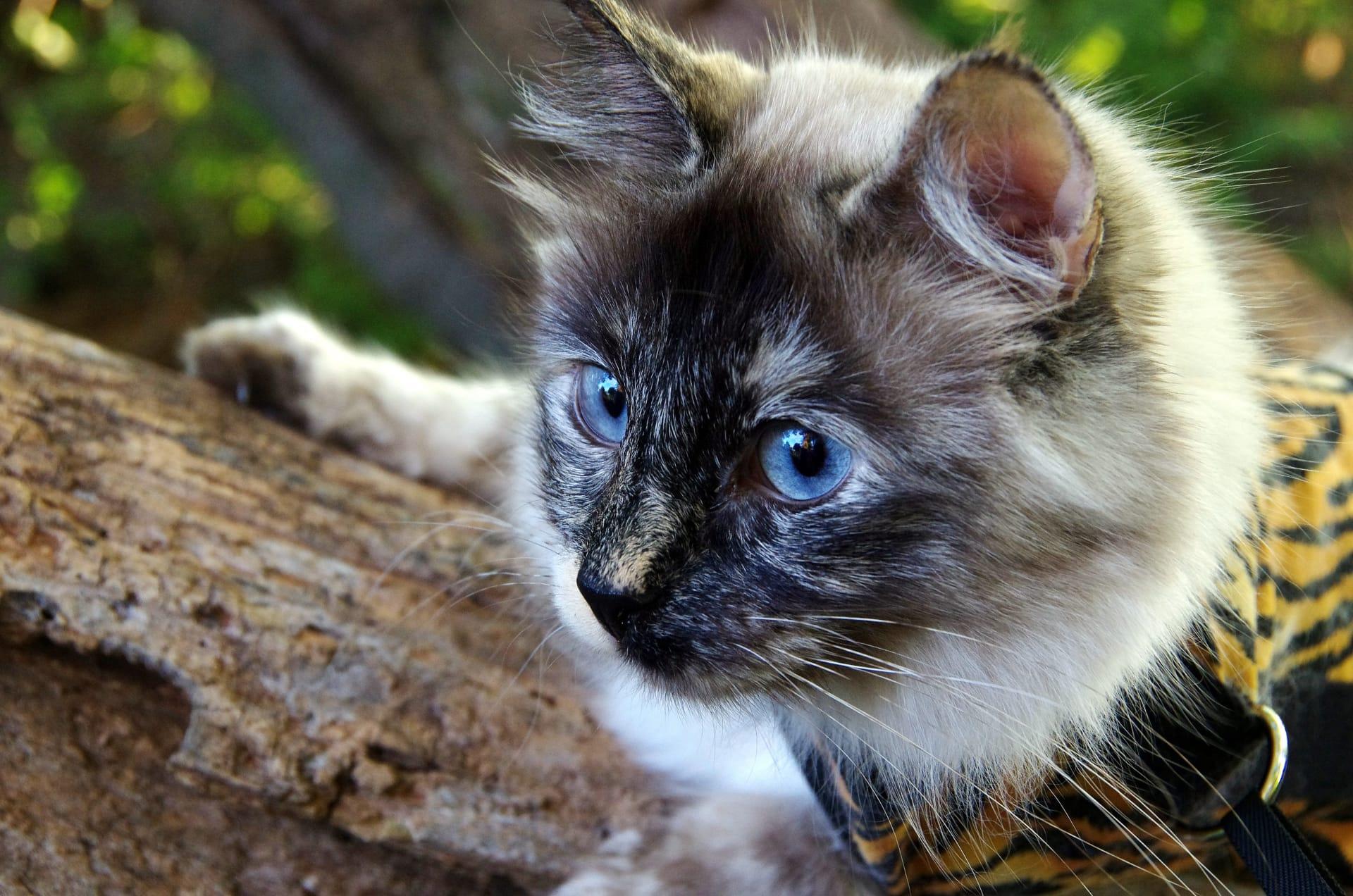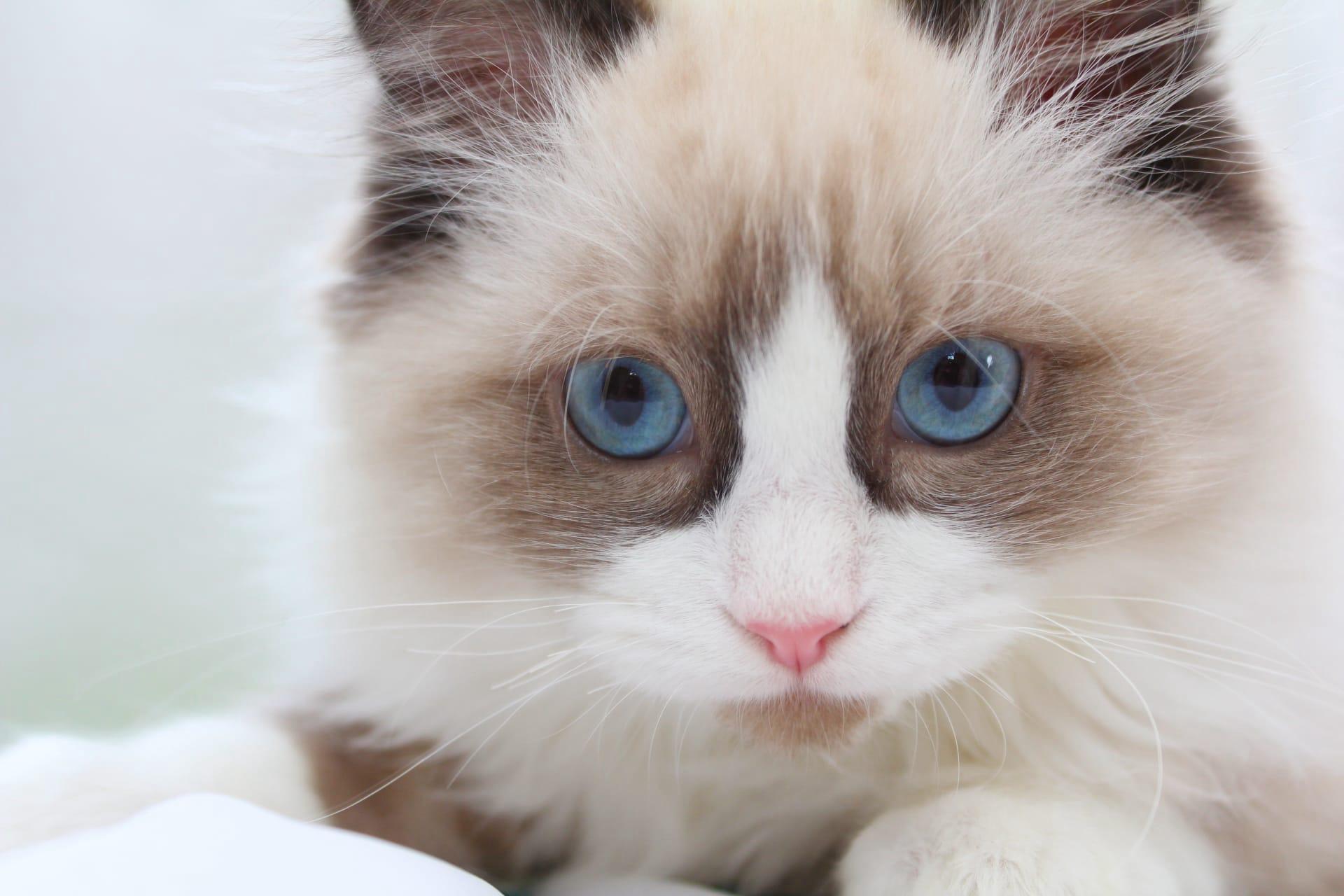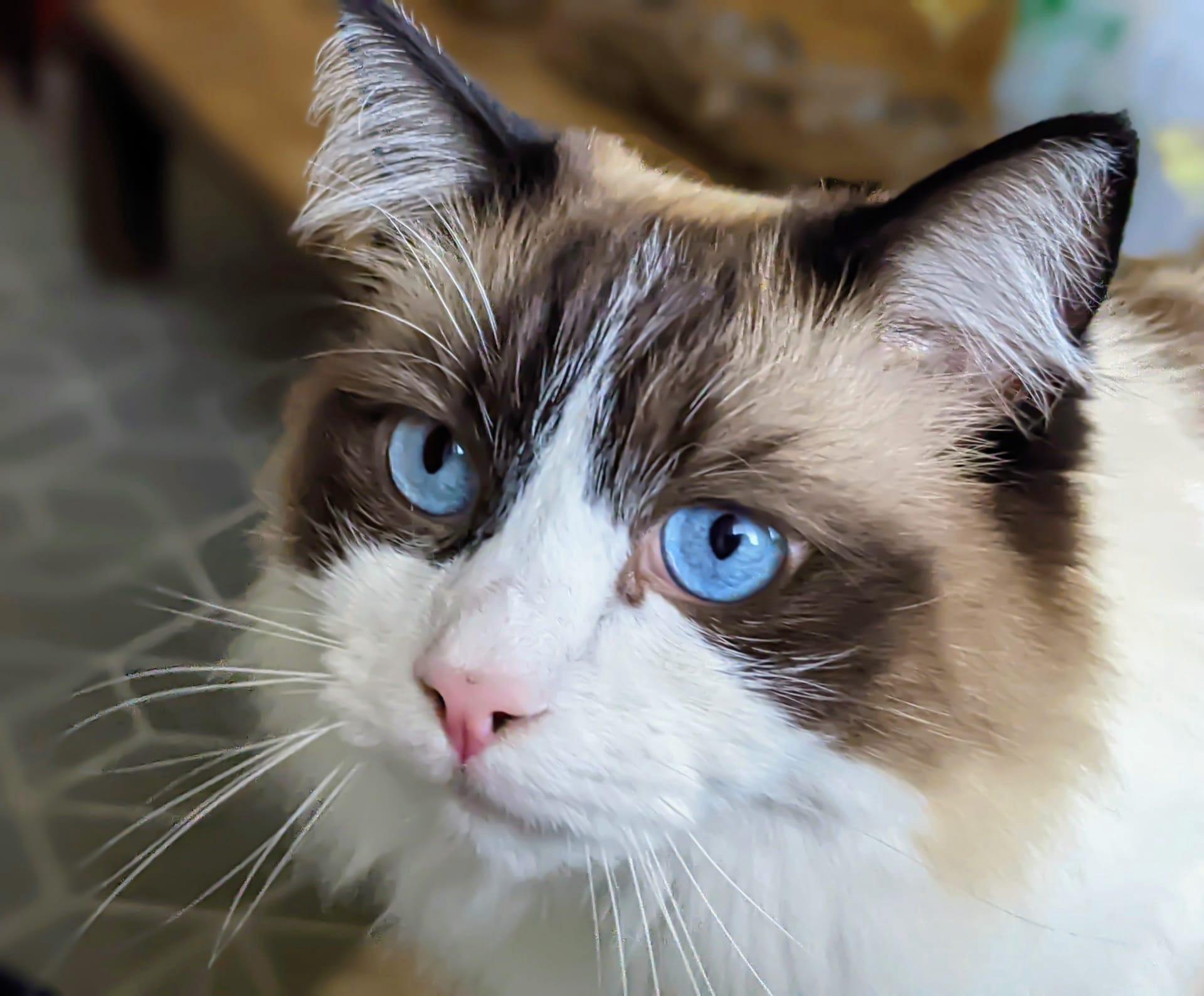1
Ragdoll cats are known for their striking blue eyes, a trait that is almost universal among the breed. These captivating eyes are not just beautiful; they reflect the breed's genetic heritage, rooted in a recessive gene that specifically affects coat color and eye color linkage. The depth of the blue in their eyes can vary significantly from cat to cat, with some showcasing a deep, sapphire-like hue, while others might have a lighter, more crystal-blue appearance. This variation adds to the uniqueness of each Ragdoll, making them not only a pet but a living piece of art.
Ragdolls are also famed for their large, muscular build, with males typically weighing between 12 to 20 pounds (5.4 to 9.1 kilograms), and females slightly lighter, ranging from 8 to 15 pounds (3.6 to 6.8 kilograms). Their size is complemented by their soft, semi-long coat, which feels silky to the touch. Unlike many other large breeds, Ragdolls have a surprisingly low maintenance coat that does not mat easily, thanks to their rabbit-like fur texture. This unique combination of size, coat quality, and low grooming needs makes them an ideal companion for those looking for a large, cuddly, yet easy-to-care-for pet.

2
Ragdoll cats possess a unique personality trait known as 'floppy cat syndrome.' This term describes their tendency to relax completely and go limp when picked up, much like a ragdoll, hence their name. This behavior is not just endearing but also highlights their exceptionally calm and docile nature. It's a characteristic that has been selectively bred into the Ragdoll breed, making them one of the most laid-back cat breeds. This trait, combined with their affectionate demeanor, makes them perfect pets for families and individuals seeking a gentle and loving companion.
Another fascinating aspect of Ragdoll cats is their developmental timeline. Unlike many cat breeds that reach full size and maturity within the first year, Ragdolls are slow growers. They can take up to four years to reach their full size and coat color. Kittens are born white and gradually develop their distinctive color points - the darker colors on their ears, face, paws, and tail - as they mature. This slow maturation process means that Ragdoll owners can enjoy their kitten's antics and growth for a longer period, watching the gradual transformation into their full majestic adult form and coloration.

3
Ragdolls have a history that reads like a feline fairy tale. The breed was developed in the 1960s in California by a breeder named Ann Baker. She started with a domestic longhair named Josephine, who, after being injured in a car accident, produced kittens with the distinct ragdoll traits of a gentle, placid temperament, and a tendency to go limp when held. Baker believed Josephine's accident had somehow contributed to these traits, though it's more likely that selective breeding played a more significant role in the Ragdoll's development. This origin story adds a layer of mystique to the breed, making them a subject of fascination among cat enthusiasts.
Ragdolls are known for their sociability and tendency to follow their owners around the house, earning them the nickname 'puppy cats.' This behavior is not just adorable but also indicative of their strong social bonds with humans. They thrive on human interaction and are known to greet their owners at the door, join in with family activities, and even play fetch. Their dog-like behavior extends to their trainability; Ragdolls can be taught to perform tricks and obey commands, further distinguishing them as one of the most interactive and engaging cat breeds.

4
The Ragdoll breed has a relatively good health profile, with a life expectancy of around 12 to 15 years. However, they are predisposed to certain genetic conditions, such as hypertrophic cardiomyopathy (HCM), a form of heart disease that is common in the breed. Responsible breeders test for this condition to reduce its prevalence, emphasizing the importance of adopting from reputable sources. This commitment to health and longevity means that Ragdoll cats can be a long-term companion, sharing years of joy and affection with their families.
Interestingly, Ragdoll cats are often recommended for indoor living due to their extremely laid-back nature and lack of survival instincts. This characteristic makes them less aware of dangers, such as traffic or aggressive animals, making outdoor environments risky for them. Their trusting nature also means they're more likely to approach strangers, which can be dangerous if they wander off. For these reasons, many Ragdoll owners choose to keep their pets indoors or provide supervised outdoor time in a safe, enclosed space, ensuring their safety while allowing them some exploration and fresh air.

5
Ragdolls have a coat that comes in a variety of patterns and colors, including points, mitted, and bi-color, with color ranges from seal, blue, chocolate, and lilac, among others. This diversity in appearance means that no two Ragdolls are exactly alike, with each cat boasting its unique pattern and coloration. The point coloration, in particular, is temperature sensitive; warmer parts of their body have lighter colors, while the cooler extremities develop darker hues. This fascinating genetic trait adds to the breed's allure, making each Ragdoll's coat a unique expression of its genetic heritage.
Lastly, Ragdolls are known for their compatibility with children and other pets, including dogs. Their gentle disposition and patience make them excellent companions for families with young children. They are tolerant of handling and are not easily stressed by the noisy environments that often accompany family life. Additionally, their social nature means they can coexist peacefully with other pets, often forming close bonds with them. This adaptability and sociability make the Ragdoll an ideal pet for a diverse range of households, bringing joy and affection to their human and animal family members alike.